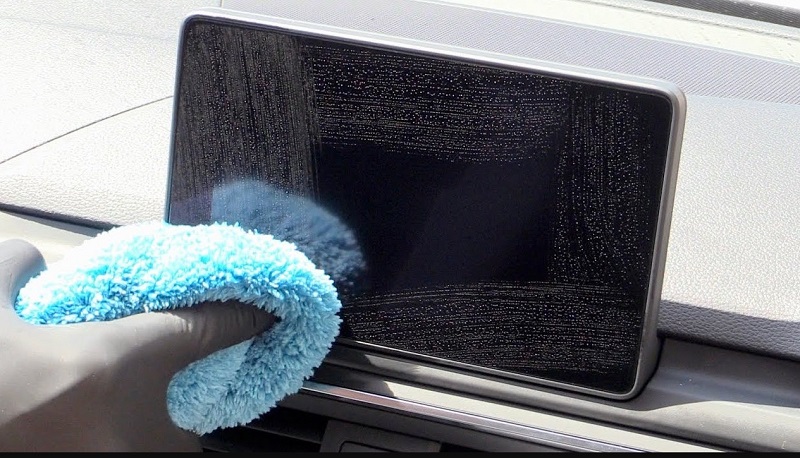When it comes time to clean your car’s touch screen, how to clean it is important. There are things that you should do, and there are cleaning methods that should be avoided. Over time everyone’s car touch screen becomes clouded with fingerprints and dirty little smudges of dust and debris. In this article we will review the right methods to clean your touch screen as well as some things you should never do.
Science and Importance of Touch Screen Coatings

The majority of the touch screens found in today’s vehicles are “Thin Film Transistor Liquid Crystal Displays” (TFT LCD’s). These screens are very similar to the glass screens on laptop computers and they are specially coated to resist sun glare and increase responsiveness to touch commands. The coating (ITO or Indium Tin Oxide) is electrically conductive and releases a very small electrical charge when touched, causing the screen to respond to the selected touch command. If the coating becomes dirty or damaged, the screen’s response can be decreased or deadened. The coating’s second function is to protect the screen against superficial scratches. When you touch the screen with your finger, you don’t actually touch the glass of the screen, but the coating that covers the glass. It is important when cleaning your touch screen that you don’t accidentally damage this protective coating.
Cleaning Your Touch Screen: Step-by-Step

- Turn Your Screen Off. Having the screen off will keep you from interfering with any pixels you wipe across and also dirt, fingerprints, and smudges are easier to see on a darkened screen.
- Use a Microfiber Cloth. Microfiber cloths are non-abrasive. This makes them the go-to choice for cleaning any touch screen, especially LCD screens in cars and trucks. Don’t cut corners when purchasing a microfiber cloth, go for the highest quality cloth you can find. For bordered edges, you can use a dampened cotton swab, but be very gentle and only use the swab on the edges. Cotton is abrasive and can scratch the touch screen surface
-
- This brings us to the first “what not to do”. Don’t use paper towels or cotton cloths, like old t-shirts or diapers. Both of these are highly abrasive and neither do a good job of collecting dust or dirt. Using these items can cause scratches and also leave behind lint particles.
- Use a Solution of White Vinegar and Distilled Water. In a spray bottle, mix a solution that contains less than 50% vinegar and then fill the remainder of the spray bottle with distilled water. White vinegar is mildly acidic and does a great job of eliminating oily smudges, greases, and sugary deposits. And distilled water has no minerals in it that may scratch the touch screen.
- Our second “what not to do”. Never use a glass cleaner or any other type of cleaner that contains alcohol or ammonia. Alcohol- and ammonia-based cleaners can do permanent damage to a touch screen.
- It may be tempting to use a lens-cleaning wipe of the type used for eyewear. In most cases, the cleaning solutions of these wipes are alcohol-based and alcohol can damage touch screen surfaces. Besides that, the wipe’s fibers are not very soft and can result in scratches.
- Spray the Solution onto Your Microfiber Cloth. Make the cloth only slightly damp, never wet. Applying any type of moisture directly to electronic components (touch screens included) is never recommended.
- Our third “what not to do”. Never over-wet the cloth and never spray any cleaning solution directly onto the screen.
- Wipe Side-to-Side or Up-and-Down. Using deliberate, gentle, directional wipes will help prevent streaking. Use a circular motion only when you encounter grimier areas, and then follow up that circular motion with the side-to-side or up-and-down directional wipes.
- Finish With a Dry Microfiber Towel. After the cleaning strokes, finish up by wiping the screen with a dry microfiber towel. The finish wipes should be in the same direction you used to perform the cleaning strokes.
- Allow a Few Minutes of Air-Drying Time. Once you are sure that your touch screen is 100% dry, it will be safe to turn the screen back on. It should look as good as new.
Conclusion
Keep all of those smudgy prints off the screen by always wiping your fingers before touching the screen. When the screen does require cleaning, the safest thing to use is a microfiber cloth and a natural cleaner solution.
